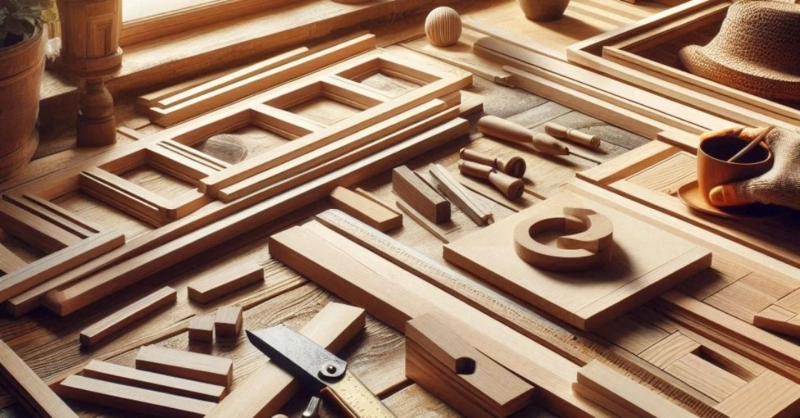Since ancient times, wooden windows have been linked to both beauty and functionality in construction. Individuals who want to enhance the look and appeal of their buildings like to choose them because of their everlasting charm and natural comfort. However, choosing the correct wood type for wooden windows requires providing great thought to both cosmetic and durable factors. To help you in making a wise decision, this thorough allusion examines the many wood species that are commonly utilized for windows, their features, and useful concerns.
The Value of picking the Correct Wood
The wood chosen has a major effect on how long wooden windows last, how much maintenance they need, and how they look generally. Factors like water resistance, texture pattern, color variation, and longevity should all be taken into mind to make sure that your windows look good and perform properly for long periods of time.
Common Wooden Window Material
- Oak
Oak is a common supply for wooden windows due to its durability and longevity. Its distinctive grainy pattern improves the appeal of windows, and its durability is partly due to its natural protection from insects and dampness. * Because of their strong structure and classic appeal, oak windows are frequently used in traditional and rustic-style homes.
- Mahogany
Mahogany\'s smooth consistency and deep brownish-red color make it extremely valuable. Because of its remarkable resistance to rot, warping, and swelling, it is an excellent pick for windows that are dependent on a variety of weather conditions. Mahogany windows match both modern and traditional architectural designs because of their beauty and elegance.
- Teak
Teak is renowned for its outstanding resistance against humidity, vermin, and degradation. Its original golden-brown color slowly turns to a silvery sheen as a result of deterioration. Because of their intrinsic resistance to water and low care needs, teak windows are suitable for coast or highly humid areas.
- Pine
Pine is a cost-effective and adjustable wood alternative for windows. Because of its ease of use, it can be used for broad window designs. Despite being less durable than hardwoods, pine can be processed to boost its capacity to withstand humidity and insects. Pine windows are well-liked because they go well with many different styles of construction and are affordable as well.
- Cedar
Cedar is prized for its remarkable strength and natural beauty. It is rich in color, varying from gold to reddish-brown, and has a unique fragrance. Because cedar windows are resistant to moisture, insects, and fading, they are perfect for applications outside. Their resilience to bad weather and rustic charm make them popular selections.
Things to Take Into Mind When Selecting Wood for Windows
- Durability
Based on the wood species\' inherent ability to resist humidity, insects, and rot, evaluate how strong it is. Although they may need a larger initial expenditure, hardwoods like oak, mahogany, and teak are typically stronger than softwoods like pine.
- Requirements for Maintenance
Think about maintaining demands of various wood kinds. Because of their organic oils and resins, some woods, like cedar and teak, require minimal care, while others could require regular sealing or repainting to guard against moisture and ultraviolet (UV) rays.
- Appealing Design
Select a type of wood that mixes in well with your home\'s structure and interior design sensibility. To attain the goal aesthetic perception, take into consideration variables like grain pattern, color variety, and how the wood will age over time.
- Regarding the Environment
To ensure ethical forestry techniques and reduce impacts on the environment, choose wood species that have been certified by associations or other sources of sustainable wood.
- Price
A budget should be balanced with the price of various wood species. Hardwoods typically cost more up front, but because of their longevity and low maintenance requirements, they may save money over time.
Conclusion
Selecting the proper wood for wooden windows needs to find the right balance between visual appeal and longevity. Choosing strong hardwoods such as mahogany, teak, or oak guarantees life expectancy and durability to weathering. Additionally, the ageless aesthetic appeal of these woods adds to the attractiveness of any home. When properly cared for and kept up, softwoods like pine can still be durable and reasonably priced. In the end, a choice is based on intended looks, maintenance preferences, and particular circumstances in the environment. A home\'s value and aesthetic appeal can be greatly increased by well-maintained wooden windows, making them an excellent investment for both practical and decorative reasons.


